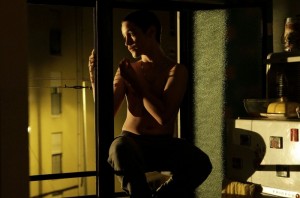
Berlinale, the Berlin-based international film festival, is one of the best-known in the world and after visiting two shows this year I clearly see the reasons for it.
My first close encounter with Berlinale began when I got the programme and had to choose the films to see and screenings to attend from amongst the twenty pages of tightly-packed squares including times from early morning until late at night.
Luckily my own schedule and interest in short films made my wish-list possible and precise. After experiencing the suspense over the availability of the tickets, two of them were finally in my hand: one for one of the seven programmes of short films and the other for the Gala screening of the winning shorts!
Both shows start at ten in the evening on different days. Despite some troubles in the metro and getting lost in the urban jungle of Potsdamer Platz, I am finally in the Cinemaxx, full of people looking bright and colourful, busy reading festival programmes, drinking wine and coffee and energetically chatting in all possible languages regardless of the late hour.
I have a seat in the first row and the screen is simply huge. The theater is full. The first film is a German-Mexican co-production directed by Rosana Cuellar and titled A Woman called Yssabeau. It is a surreal story of a deer-woman wandering in an unknown land.
The talk by the film crew after the screening revealed to us the director’s own reflections on the topic of a stranger in a new land and the changes one has to undergo in order to become part of a new society. The variety of postmodern costumes that mixed together eighteenth-century aesthetics with modern materials confused the viewer, submerging us deeper in the surreal atmosphere of the invented reality.
Strikingly, such films based in the imaginative world were a minority at the festival. Most of the works shown presented the audience with an exact time, place and social context. For instance, the five-minute German film fragment Strauss. OK by Jeanne Faust told a non-verbal story of a bouquet-making apprentice in a Vietnamese flower shop, addressing the issues of immigration and the clash of cultures.
See you tomorrow by Lee Woo-jung took us to a Korean High School. For twenty four minutes we were invited to compare our memories of school time with that of two teenage girls in Korea who gossip about their classmates and are ready to cut their veins for the boy they love. At night the fun involves alcohol, games and elderly group of boys and girls, with a tragic final of the short film.
Staying in the Asian part of the world, the next film was The Great Rabbit by Atsushi Wada, a Japanese-French animation that I would see once again, a week later, at the Gala Show, as the film won a Silver Bear award at this year’s Berlinale.
Minimal though magical, the animation, in a metaphorical way, addresses the issue of disobedience in a society alongside the mysterious existence of the Divine, the changing concept of which is a result of transformations in our consciousness and the society we live in.
The winner of this year’s shorts competition was Rafa by Joao Salaviza from Portugal, co-operating with French producers. The Golden Bear award went to this story of a teenage boy in the suburbs of Portugal who is looking for his mother, who has perhaps been arrested by the police for crashing a car that doesn’t belong to her.
Street life, minor robberies, dirty fast-food shops, a little nephew and a silent sister, the rude attitude of local police officers and a strange feeling of freedom are there for young Rafa to discover and experience for the first time in his life.
Another social documentary-like story that became Berlin Short Film Nominee for the European Film Awards 2012 was the French Vilaine fille mauvais Garçon (translated as: Two Ships) directed by Justine Triet.
It is a story of a young couple that meets at a party and tries to find some lightness amid their gloomy routine. Sick relatives, the lack of a job, money, or inspiration lead the two characters to attempt to comfort each other with simple presence and light commentaries in a non-sophisticated discussion.
A bit more exotic, yet very realistic, were Licuri Surf by Guile Martins from Brazil and Loxoro, Claudia Liosa’s Spain-Peru-Argentina-USA production. The first one was a story of an indigenous surfer looking for beaches with better waves and accompanied by stunning Brazilian landscapes. The second story was less uplifting, as it pictured the marginalized world of Peru’s transsexuals, who speak their own language called Loxoro.
After all the social criticism and realistic pictures of contemporary life in different parts of the world, the screening ended with a kitschy, unreal and super-stylized musical from Canada titled The man that got away by Trevor Anderson.
Simple, yet provocative lyrics, schematized dance movements, the polished aesthetics of Pierre-and-Gilles sailors, Broadway performers, the doctors and nurses of a psychiatric hospital and the antics of prison inmates did their job of putting a melancholy smile on our faces. We left the theater crooning lines of the songs: “This place is so gay and not in a good way.”
Berlinale is definitely one of the big bright and shiny festivals with lots of people, celebrities, expensive cars lined up by the hotel doors, yet at the same time accessible to a common spectator wishing to participate in those celebrations dedicated to the art of film making.
And the whole atmosphere around Potsdamer Platz supported the feeling of celebration, despite the fact that the images on the screen put great emphasis on social problems existing in modern society. So here is the combined experience of the Berlinale: brightness and sparkle, with painfully realistic, thought-provoking films.
by Iryna Melkonyan (AY’12, Ukraine)
